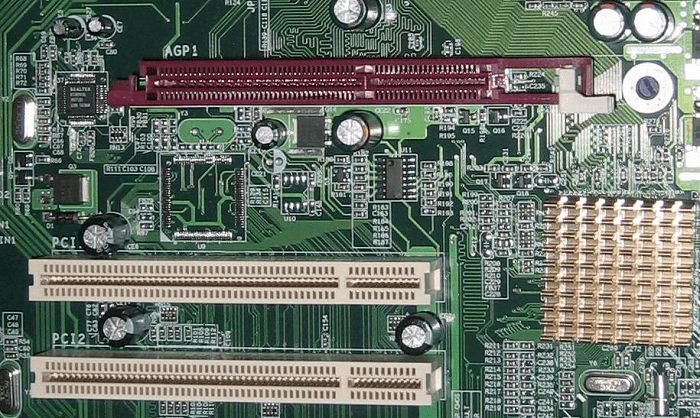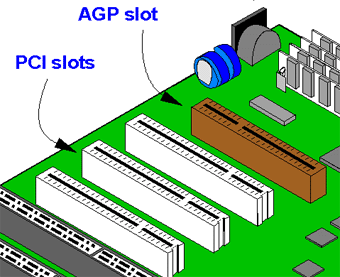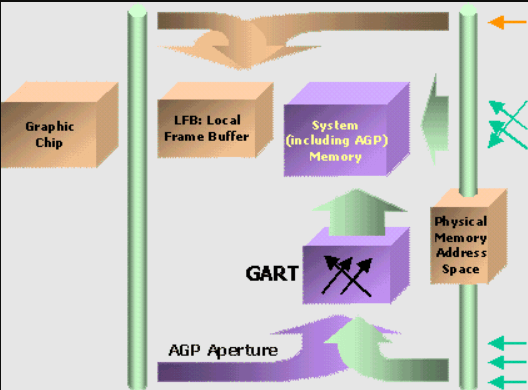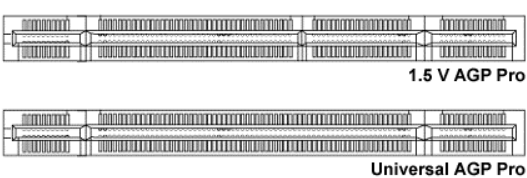What is AGP (Accelerated Graphics Port)?The Accelerated Graphics Port (AGP) is a parallel expansion card standard created to connect a video card to a computer system and help speed up 3D computer graphics. It was initially intended to replace video card connectors of the PCI kind. The point-to-point channel is utilized for high-speed output video. Graphic cards are connected to a computer's motherboard using this connection. It makes machines generate visuals more quickly while using the system's resources better. An AGP is primarily used to transmit 3-D images much more fluidly than is feasible on a standard PC. Compared to PCI, AGP offers substantially quicker connectivity and throughput. 3D graphics, high-definition gaming, and graphics for engineering and architecture are the main uses of an AGP. High-resolution video images can be created using the processors built into each graphic card. The connection between the video card and the computer's processor and memory often uses this port. Thanks to this connection, they can play video games with faster loading times and better graphics. The graphics card that helps the computer create video images is what is known as the video card, and it is attached to the computer. Because these cards can produce such images, they are used in games where players frequently engage in complex graphic play. 
History of AGPIn 1996, Intel created the AGP, which debuted in Socket 7 Intel P5 Pentium and Slot 1 P6 Pentium II processors. Early AGP boards were merely bridged to PCI-based graphics processors based on a peripheral component interconnect (PCI). Besides the enhanced 66 MHz bus frequency and the quadrupled bandwidth over PCI, bridging didn't do anything to help the cards take advantage of the new bus. It was stated that the PCI was the foundation upon which the AGP was developed. Early AGP sheets used processor designs that circumvented PCI and were essentially connected to AGP. As a result, the cards only benefited a little from the new transport. The 66 MHz transport clock, which multiplied data transmission through PCI and improved transport selectivity, was the key upgrade used. The AGPgart component module was initially executed in Linux in 1999, enabling AGP-enhanced rapid information movements. How AGP Works?AGP uses a dedicated memory bus for graphics hardware, unlike PCIe technology, which was developed over a shared-memory design. AGP uses specific signaling that enables users to transport twice as much data through a port at the same clock speed. The rising edge of the clock, represented by the "0" to "1" transition signal, and the falling edge of the clock, represented by the "0" transition signal, are, therefore, when the bus sends data. It executes transitions using both signals, in contrast to standard PCI, which transfers data on separate transitions at each cycle. 
In the past, Intel offered the AGP hardware interface for attaching a graphics card (display adapter) to a computer. AGP was introduced in 1997 and replaced by PCI Express in the late 2000s. It directly connected the card and memory through a single motherboard slot. AGP was invented as a faster alternative to PCI, freeing up a PCI slot for another peripheral.
Tip Due to restricted or non-existent driver support, not all operating systems can handle AGP. For instance, AGP was not supported by Windows 95. Features of AGP SlotsCompared to a PCI, the features of an AGP enhanced its performance. These characteristics are nothing compared to the improvements made to the AGP design since its creation. The developments include Pipelining: AGP slots have the capability of pipelining in computer architecture, which enables them to receive and process numerous instructions at once. The PCI does not have this feature because it can only accept (or) act on an instruction. Due to this feature, data transfer is improved. Side Band Addressing: This AGP slot feature includes some extra data in the packet itself. Simply put, this extra information outlines the system for how and where the data should be used. It takes time because this feature needs to be included in POTS. Texture Maps Storage: Texture maps can be stored in the system memory thanks to this AGP capability. Since the storage is only available on the graphics card, this is not present in PCI. Due to the system memory's vast storage capacity and quick processing, high performance is attained. AGP Memory ImprovementsAGP memory or non-local video memory is the name of this sort of memory. The ability of AGP to dynamically allocate RAM for usage by the graphics card enhances the process of storing texture maps. The number of texture maps that need to be saved on the graphics card's memory can be decreased by using the operating system's much faster and more plentiful RAM to store texture maps. The texture map size your computer can process is also no longer constrained by the graphics card's RAM capacity. 
AGP also reduces RAM use by only saving texture mappings once. It uses some deception to accomplish this. The Graphics Address Remapping Table chipset serves as the vehicle for this trick (GART). The portion of system memory that the AGP utilizes to keep texture maps for the graphics card is re-addressed by GART. Because of the new address that GART has provided, the CPU assumes that the texture map is kept in the card's frame buffer. The texture map may be scattered throughout the system RAM thanks to GART, yet when the CPU needs it, it is where it should be. Characteristics of AGP:
Applications of AGP:
What is AGP Pro?AGP Pro was introduced in 1998 as an AGP interface extension specification for powerful workstations. It includes a bigger slot and extra voltage pins for 3D video cards with high power requirements. The graphics device and memory are connected directly, thanks to the AGP Pro bus specification. The AGP Pro is backward compatible with the AGP bus's earlier iterations. AGP Pro slots can provide powerful high-end workstation graphics cards with greater power. AGP Pro offers an expanded connector, thermal envelope, revised mechanical standards, and I/O bracket in addition to providing more power to video cards. AGP Pro slots are a little longer than those in regular AGP. 
AGP Pro is a physical specification designed to meet the demands of premium graphics card makers, who are currently constrained by the maximum amount of electrical power that an AGP card may require (about 25W). AGP Pro uses a slightly longer AGP slot that can accommodate current AGP cards and is designed to accommodate cards that draw up to 100W. Different versions of AGPAGP 1.0 It has a clock speed of 66 MHz and the speed of two times more than normal. The transfer rate for AGP 1.0 is around 266MB/s to 533 MB/s. AGP 2.0 It has a clock speed of 66 MHz and a speed four times more than normal. The transfer rate for AGP 2.0 is around 1066MB/s. AGP 3.0 It has a clock speed of 66 MHz and a speed eight times that of normal. The transfer rate for AGP 3.0 is around 2133 MB/s. Difference between AGP and PCI
Advantages of AGP over PCIAGP provides direct communication to the CPU and Main Memory which helps in the quick rendering of graphics. PCI was relatively slower, so it was designed to replace the PCI (Peripheral Component Interconnect). AGP Advantages
Next TopicWhat is the Kebab menu
|
 For Videos Join Our Youtube Channel: Join Now
For Videos Join Our Youtube Channel: Join Now
Feedback
- Send your Feedback to [email protected]
Help Others, Please Share










